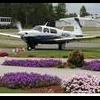It's Raining Planes :-(
-
Members Online
- cbarry
- MikeOH
- CCAS
- Deb
- Scooter
- Jeremy B
- scottatwood01
- TCC
- Bearcreek
- ragedracer1977
- 1980Mooney
- Samir13k
- Skyland
- mhrivnak
- Marc_B
- EricJ
- toto
- navysix
- bigmo
- jrwilson
- drstephensugiono
- 4cornerflyer
- Mooney-Shiner
- jamesyql
- philiplane
- redbaron1982
- exM20K
- joemoriss
- RangerM20
- jeremyc209
- Buckeyechuck
- bluehighwayflyer
- Sabremech
- hammdo
- Scott Ashton


Recommended Posts
Join the conversation
You can post now and register later. If you have an account, sign in now to post with your account.